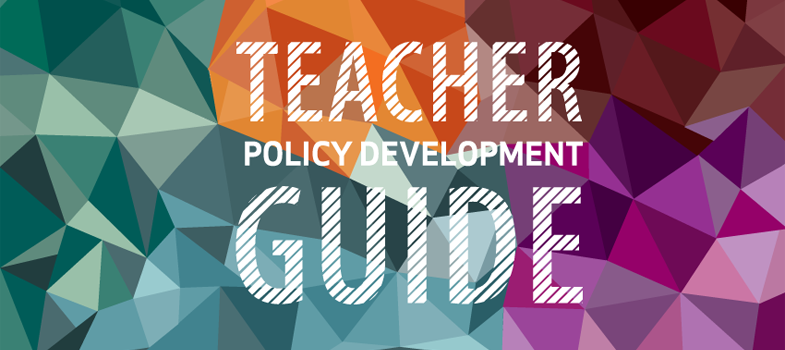Chapter 5: Implementation
Preface
As this Guide demonstrates, developing a teacher policy is a complex endeavour, which depends on a number of political, social, cultural and economic factors – many of them external to education.
In the first place, implementation is often very country-specific. Teacher policy may not have the desired political ‘visibility’ during implementation that, for example, a new school or free enrolments for all learners may have.
As political figures often need to show immediate outcomes for their constituents, teacher policy development becomes politically complex and costly, as pointed out in other regional policy guides (OREALC, 2013: 9, 90). Factors affecting implementation include overall government policies, capacities and political orientation, as well as the state of the education system and teaching profession at the time of policy development and implementation. Political and social forces at work in the country – for example, the strength of teachers’ organisations or other stakeholders – add to the project’s complexity.
Bearing in mind all of these potential influences, the ultimate goal of developing a policy is to implement it as far as possible. Therefore, as Chapter 4 proposes, plans for implementation should already be well underway as part of the policy development process, with a timeline and roadmap sketched out by the policy developers that are appropriate to the country and educational context.
Some evidence put forward to guide education policy implementation in OECD countries may help guide future efforts in these and other countries (Box 5.1).
One of the first decisions, depending on the country’s political context, will be to determine whether the policy is best applied through a government programme or campaign, executive or administrative decisions/rules, legislation, or a combination thereof. Questions to bear in mind include:
- What will have the most impact, given the country’s political, economic and education environment?
- What are the human resource and financial costs associated with the chosen path?
- What are the trade-offs in terms of these costs versus the anticipated impact?
As outlined in Chapter 4, reflection on an implementation plan will have begun during the policy development process. The next step in the process is to develop a clear and manageable implementation vehicle and plan for decision-makers.
BOX 5.1: EFFECTIVE IMPLEMENTATION OF EDUCATION REFORMS IN OECD COUNTRIES
Research on effective implementation of education reforms centred on school improvement efforts in high-income OECD countries points to several factors, including:
- Putting students and learning at the centre of reforms: focusing on learning, instruction and the classroom environment to achieve better learning outcomes
- Capacity-building of professional staff: developing teachers’ skills and competences and those of other staff responsible for reforms at any level by ensuring the necessary time, resources and learning opportunities for professional development
- Leadership and coherence: ensuring good school- and system-level leadership to help guide policy implementation, coherence and alignment with other education system policies over the long-term
- Stakeholder engagement: relying on the appropriate dialogue to involve teachers and teachers’ unions especially, but also employers and other stakeholders, from the beginning of the design process, to create well-received, legitimate policies
- Policy evaluation: targeting the policy impact on learning results via rigorous, high-quality study standards, notably experimental and quasi-experimental.
Activity: Implementing policy
The focus of this section is implementing policy and the structures that need to be in place to ensure the successful implementation.
As you read this section, make brief notes on:
- The difference between legislative process and approval, and executive or administrative decisions.
- The tools required for the successful implementation of policy.
- The types of monitoring activities that could be used.
- The characteristics of suitable indicators.
- The sources of evidence to support evaluation activities – both quantitative and qualitative
- The organisational requirements for the effective implementation of new policies.
Think about your own context and reflect on which aspects of the implementation process are strong and which could be strengthened.
